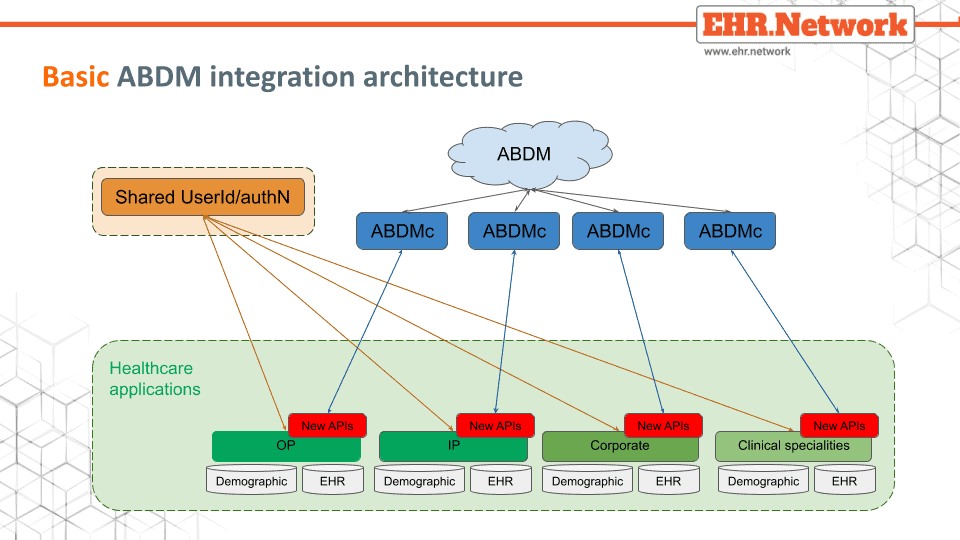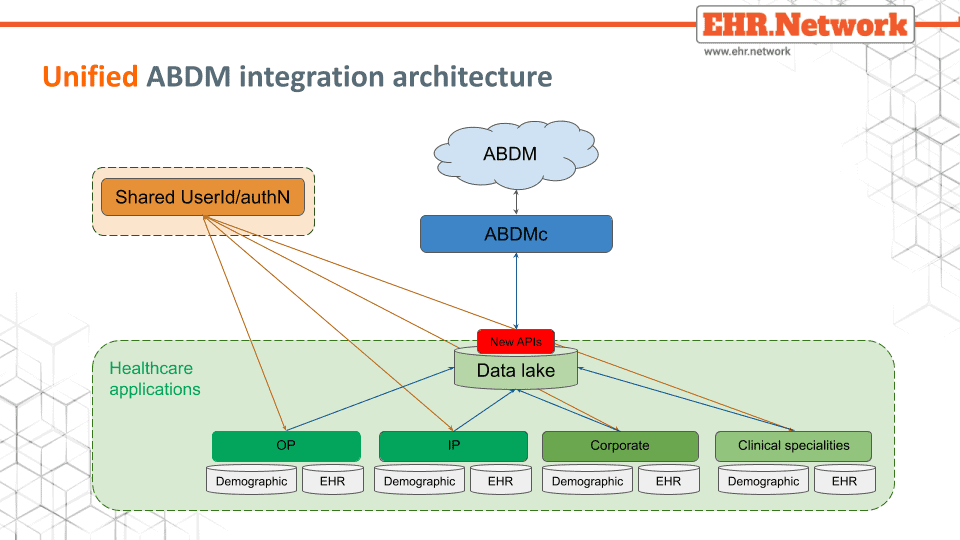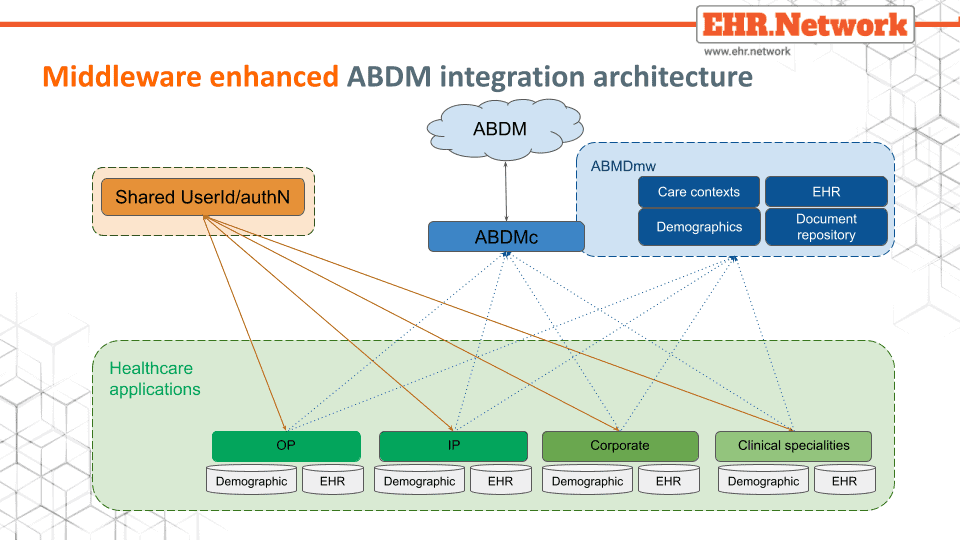ABDM Certification – Multiple Deployment Modes for EHR.Network ABDMc

Every health IT system has unique needs when it comes to ABDM certification. Depending on your architecture and existing capabilities, EHR.Network’s ABDMc can be deployed in multiple flexible modes to help you seamlessly integrate with the Ayushman Bharat Digital Mission (ABDM).
Our goal is simple: minimize changes to your existing health IT systems, while ensuring full ABDM compliance.
✅ Flexible ABDM Deployment Options Tailored for Health IT Systems
We offer three deployment modes to suit various types of digital health infrastructures:
- Basic Mode
- Unified Data Mode
- ABDM Middleware Integrated Mode
Each mode is designed to reduce development effort, accelerate certification, and simplify your ABDM onboarding process.
🔹 1. Basic Mode – App-Level ABDM Integration

In Basic Mode, a dedicated instance of ABDMc is deployed for each independent healthcare application you operate.
This mode is suitable if:
- Your systems operate independently of each other
- You are comfortable modifying each application to support ABDM flows
Your application must implement:
- ABDM-compliant data structure modifications
- API endpoints to allow ABDMc to exchange data
- Triggers for HIP-initiated actions like ABHA linking and notifications
This is ideal for smaller setups or modular systems where each app is responsible for its own ABDM certification.
🔹 2. Unified Data Mode – Enterprise-Wide ABDM Integration via Data Lake

In this deployment, a single ABDMc instance integrates with an enterprise-level unified data repository, typically a data lake or common data platform that aggregates records from all your health IT systems.
This mode is recommended for:
- Enterprises with multiple healthcare apps sharing a centralized data layer
- Organizations that already use a unified health data model
Integration responsibilities are shifted to the data layer, which handles:
- Data structure alignment with ABDM requirements
- Communication APIs with ABDMc
- Data-driven triggers for HIP flows like linking and discovery
This mode simplifies integration while maintaining consistency across your health ecosystem.
🔹 3. ABDM Middleware Integrated Mode – Zero Changes to Existing Apps

This is the most seamless deployment option. In this mode, we introduce ABDMmw, a middleware layer that acts as the central integration hub between your existing applications and ABDMc.
Perfect for:
- Enterprises with multiple health IT systems but no unified data lake
- Scenarios where making changes to existing applications is difficult or risky
ABDMmw handles everything, including:
- ABDM-compliant data storage and transformation
- All necessary APIs and data workflows
- Triggers for consent, linking, and data exchange
Your applications interact with:
- ABDMc APIs for ABHA creation and linking
- ABDMmw APIs to push/share clinical data or fetch received records as part of the workflow
This approach allows rapid ABDM integration without disrupting your current systems.
🔧 Designed for Compatibility and Certification
No matter which mode you choose, our deployment models are fully compatible with:
- M1, M2, M3, and PHR ABDM certification stages
- ABDM-compliant FHIR bundles and encryption standards
- Industry best practices for data privacy and security
Our solutions are built to scale—from startups to enterprise hospital chains—and enable you to become ABDM-ready quickly and confidently.
🔗 Also Read:
📞 Get Started Today
With ABDMc making this decision has become much simpler for you
📝 Contact us to get help from our experienced team
📅 Book a call to discuss your specific requirements
Also read
- About ABDMc
- ABDMc features
- ABDM middleware for a standards compliant integration middleware.
- Ayushman Bharat Digital Mission, The backbone to support an integrated digital health infrastructure for India